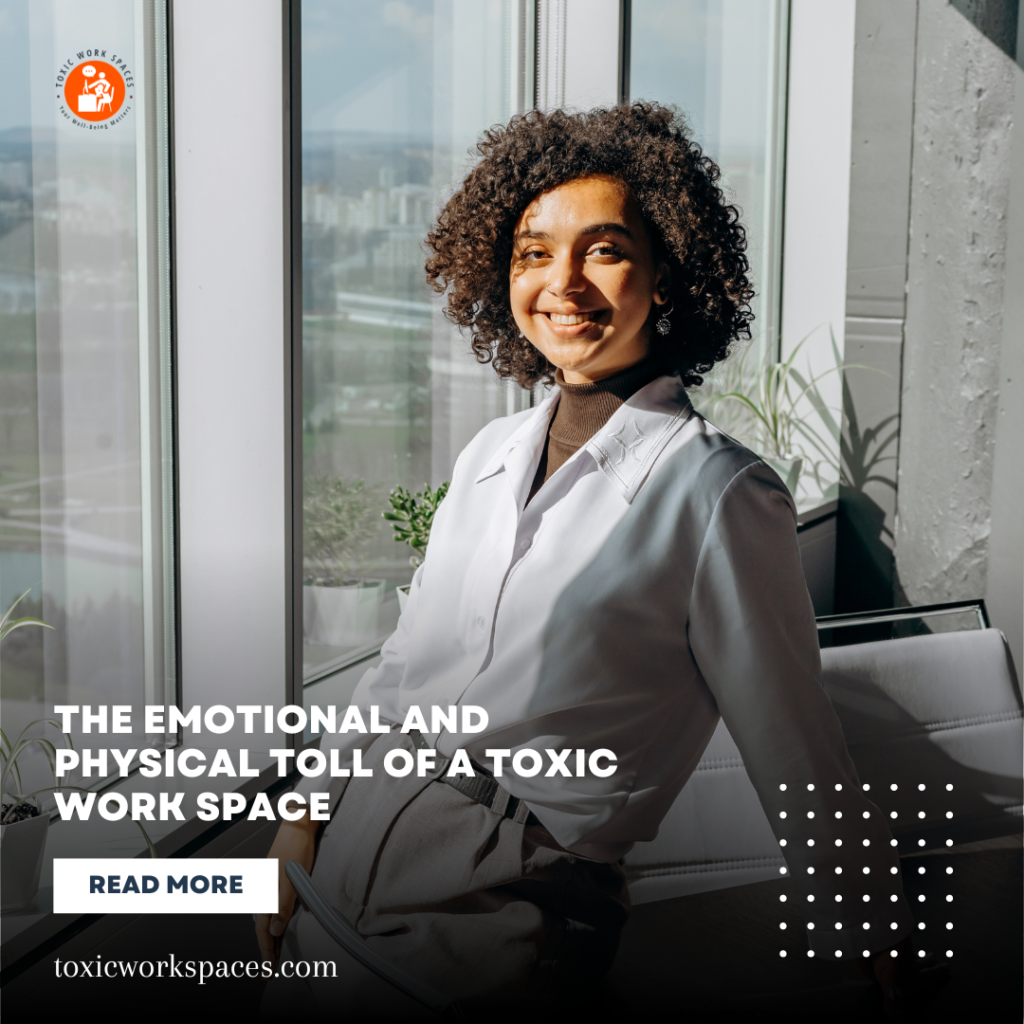The Emotional and Physical Toll of a Toxic Work Space
It’s easy to dismiss the growing conversation around toxic work spaces as mere buzz. Yet, the truth is, toxic work spaces are a serious issue with emotional and physical consequences. From daily stressors to continuous instances of bullying and harassment, the effects of toxicity at work can ripple out, affecting not only your career but your overall well-being. A toxic work space is more than just an unpleasant environment. It’s a space where negativity, dysfunction, and unhealthy behaviors dominate. These can manifest in various ways, including poor communication, lack of support, unrealistic expectations, micromanagement, favoritism, and even workplace bullying. Over time, these negative dynamics can create an environment where employees feel undervalued, unsupported, and ultimately, burnt out. One of the most immediate impacts of a toxic work space is on mental health. The constant stress and tension can lead to a variety of psychological issues, including: Consistent exposure to a toxic work space keeps your body in a heightened state of stress, triggering the “fight or flight” response. This chronic stress can lead to anxiety, irritability, and even depression. Burnout is more than just feeling tired or overworked. It’s a state of emotional, physical, and mental exhaustion caused by excessive and prolonged stress. In a toxic work space, burnout can creep in quickly, leaving you feeling drained, cynical, and detached from your work. The unpredictability and instability of a toxic work space can lead to constant worry and anxiety. You may find yourself second-guessing your every move, feeling like you’re walking on eggshells, or experiencing panic attacks. Over time, the negative reinforcement and lack of appreciation common in toxic work spaces can erode your self-esteem. You may begin to doubt your abilities, question your worth, and feel powerless to improve your situation. While the psychological effects are significant, the physical toll of a toxic work space is just as concerning. Your body responds to stress in a variety of ways, many of which can lead to long-term health issues if left unaddressed: Stress and anxiety from a toxic work space can wreak havoc on your sleep. You might struggle with insomnia, restless sleep, or nightmares, all of which can lead to chronic fatigue and decreased cognitive function. The tension and stress of working in a toxic work space can manifest physically in the form of headaches or migraines. These can become more frequent and severe, affecting your ability to focus and perform daily tasks. Chronic stress suppresses your immune system, making you more susceptible to illnesses. Frequent colds, flu, or other infections could be a sign that your work environment is affecting your health. Long-term exposure to stress increases the risk of high blood pressure, heart disease, and other cardiovascular issues. The constant state of anxiety and tension in a toxic work space can be a significant contributor to these conditions. Stress can also affect your digestive system, leading to issues such as stomach pain, nausea, or irritable bowel syndrome (IBS). The gut-brain connection is strong, and emotional stress often manifests in physical symptoms. If you’re experiencing the emotional and physical toll of a toxic work space, it’s important to recognize that you’re not alone and that there are steps you can take to protect your well-being: The first step is recognizing that you’re in a toxic work space. Denial or minimizing the issue won’t help in the long run. Whether it’s from a trusted colleague, a mentor, or a professional counselor, talking about your experiences can provide relief and perspective. Support networks can also offer advice on how to navigate your situation. Prioritize activities that help you relax and recharge. This might include exercise, meditation, hobbies, or spending time with loved ones. Self-care is crucial for maintaining your mental and physical health in the face of a toxic work space. Learn to say no to unreasonable demands and set clear boundaries between work and personal time. Protecting your time and energy is essential for preventing burnout. If the toxic work space shows no signs of improvement, it might be time to explore other career opportunities. Your health and well-being are more important than any job. The emotional and physical toll of a toxic work space is real and can have lasting effects on your life. It’s essential to be aware of these impacts and take proactive steps to protect yourself. At Toxic Work Spaces, we’re committed to raising awareness and providing the support you need to navigate and thrive despite these challenges. Remember, Your Well-Being Matters.
The Emotional and Physical Toll of a Toxic Work Space Read More »



